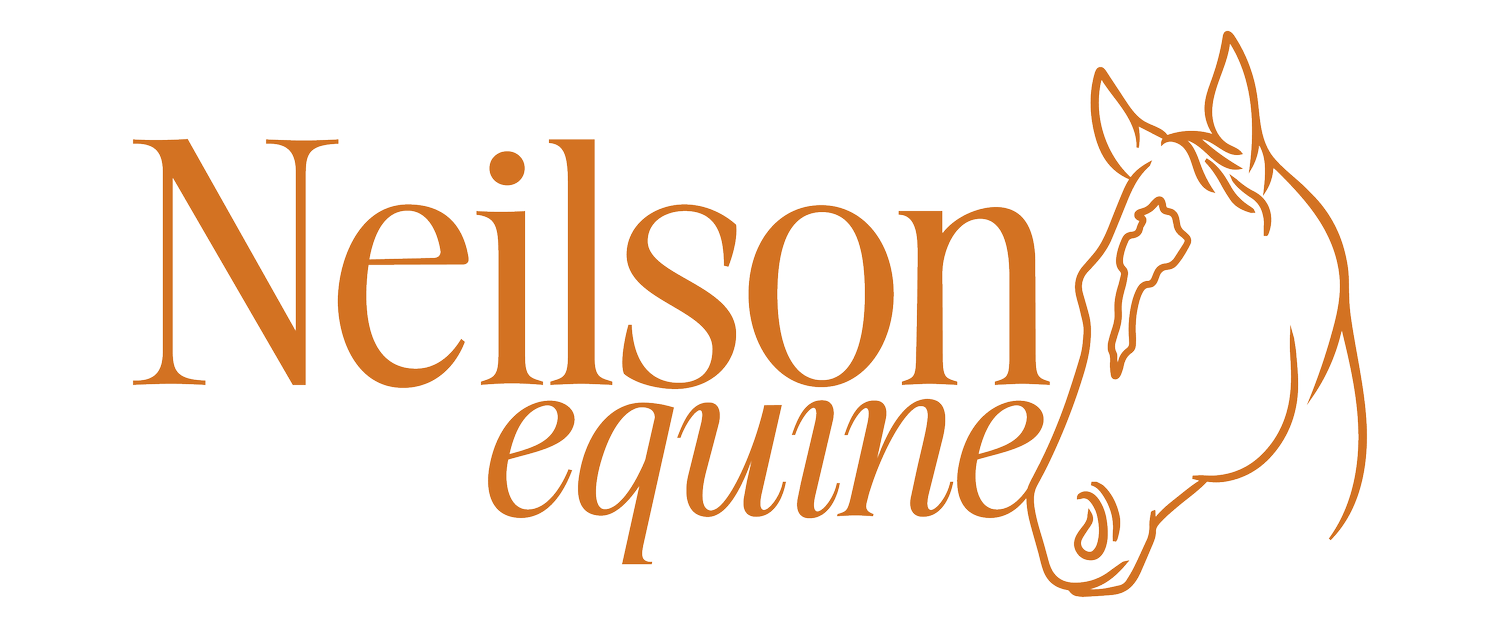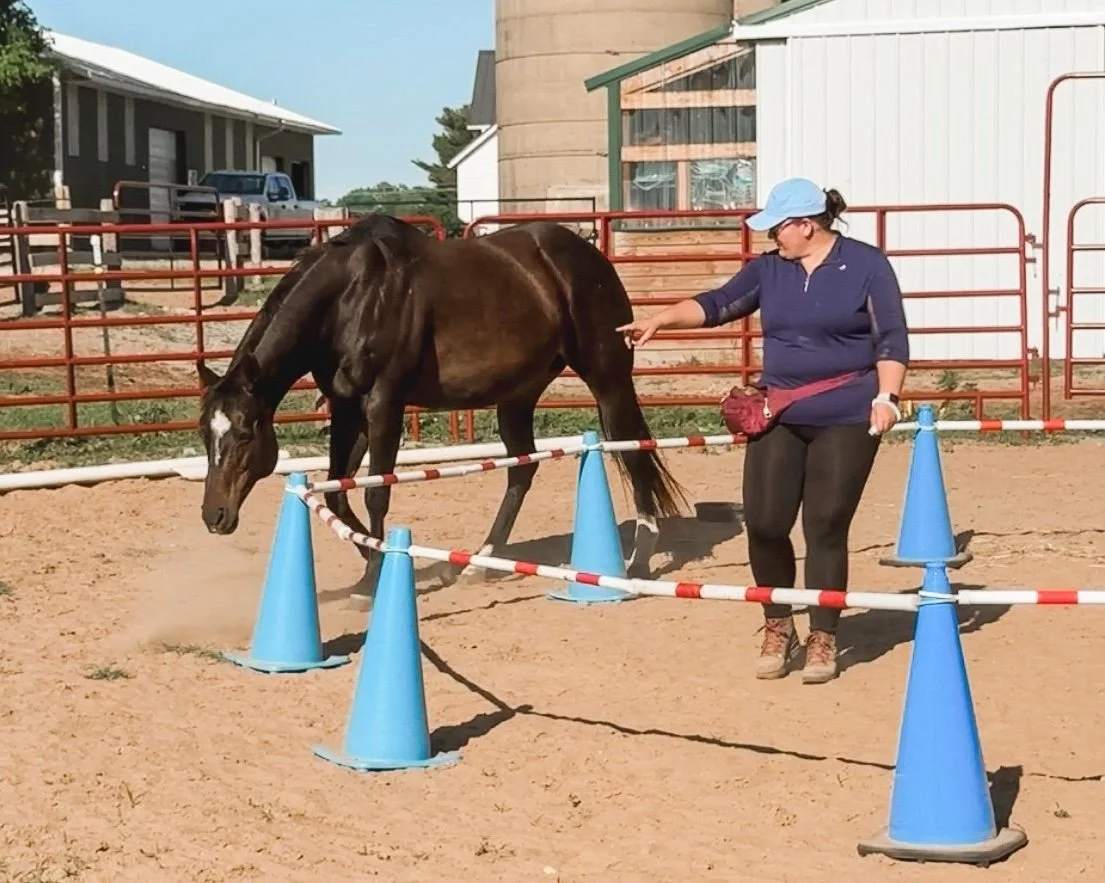Interested in using Positive Reinforcement with your own horse but don’t know where to start? Alyssa created this page with beginners in mind! Learning an entirely new way of working with your horse can be challenging and overwhelming. Follow the steps below to start learning how to incorporate R+ into your training!
Positive Reinforcement 101
Where to Start
Become familiar with the most commonly used terms in R+ training.
You’ll see these terms used often throughout this website and other sources, so give yourself a head start by learning what they mean!
Read up on learning theory, R+ training, and equine management with these books!
Expand your knowledge and your bookshelf with these recommendations! Learning how to read your equine’s behavior and properly care for them goes hand in hand with training. You’ll find some great books for all of the above on this list.
Check out these podcasts and websites full of great information.
Podcasts are a great way to continue learning when you don’t have time to sit down with a book. Here you’ll also find some great websites from other professionals!
What You’ll Need
Food Reinforcers
Treat pouch (Or anything to hold the food)
A clicker (Or use a verbal marker!)
Protected contact (Optional - this could be a fence or a stall)
A little patience for yourself and your horse - learning a new method isn’t always easy!
Food Reinforcers:
You’ll want to find a food that your horse finds reinforcing, but doesn’t get too excited about. You should start with the lowest value food reward that’s possible. For most horses, this is usually some type of hay. Popular choices are hay pellets (alfalfa, timothy, teff), chopped hay or chaff, or even just handfuls of hay! If you find your horse needing a bit more reinforcement for some more difficult behaviors, you can use higher value rewards like sugar free treats, carrots, or apples. (See the resource page under equipment & products for some of our favorites!)
**In come cases, scratches/pets may be reinforcing to the horse, but it’s important to remember that we don’t get to decide what’s reinforcing to the horse, the horse does! Not all horses will enjoy scratches, and some might actually find it aversive. Just like some horses might hate a certain treat, while it’s a great reinforcer for others.
Bridge Signal (Marker/Clicker):
The bridge signal (or marker) is what we use in Clicker Training to tell the animal that they’ve done something correctly. Using Classical Conditioning, the horse learns to expect a food reward when they hear the marker, just like Pavlov’s dog and the bell. While R+ can still be used without a marker signal, most trainers prefer to use one because it allows us to mark the precise behavior that we want to reward! Without a marker signal, by the time you grab the food reward and deliver it to the horse, they could have done multiple other behaviors in those few seconds, and you may be reinforcing something that you didn’t want to reinforce.
Some examples of marker signals are:
A clicker
A whistle
A verbal marker like “Yes!” or a tongue cluck
Touch
Bridge signals work best when it’s a distinct sound that isn’t often heard elsewhere. Clickers are great because it’s a consistent, unique sound. Verbal markers are convenient because it allows you to be hands free, but it can be difficult to keep the sound consistent.
Foundation Behaviors
Default Neutral
Sometimes referred to as “manners”, default neutral is when your horse learns to stand quietly at your side with their head in front of their body, without mugging you for treats. It’s important to teach this behavior first when using food rewards because it teaches the horse when to expect a food reward and how to accept it. When teaching this you’re simultaneously teaching your horse “manners” and conditioning the bridge signal.
*You may want to start in protected contact - with your horse on one side of a fence or gate, and you on the other. This is recommended for those horses that start out pushy for food to keep you both safe and to give you the chance to step away when needed. It’s best to keep your horse at liberty and give them the choice to walk away, or if you’re working in a stall make sure they have hay or other food so that you’re not the only source of food.
Stand next to your horse, and give your chosen bridge signal. Feed with an outstretched arm away from you, so your horses head is straight in front of their body.
Repeat this a few times, until your horse starts to recognize that food comes after the marker. Between repetitions, make sure to keep your hand out of your treat pouch. You can keep your hand at your side, or resting on top of your treat pouch. This will become part of your “default neutral” behavior.
Next, start watching for your horse to move their head away from you, and mark and reward. In the beginning this might be a small movement, like just looking away from you.
Continue doing this, until you’re marking and rewarding for your horse standing quietly with their head straight in front of them. If your horse over exaggerates the behavior and turns their head completely away from you, wait for them to bring their head back to the center before marking.
Keep your sessions short, and don’t expect your horse to get it perfect on the first try! This is something you’ll want to continue to work on over time, working on adding duration.
Targeting
Targeting is when the horse touches or follows an object. The target can be anything like a ball on a stick, an old crop or whip, a traffic cone, or your hand! Targeting is an important skill to teach your horse because it can be used to shape so many other behaviors!
Starting in Default Neutral, hold the target out in front of your horses nose.
Click and reward when your horse looks at or shows interest in the target.
Repeat this, clicking and rewarding for each time your horse shows a little more interest in the target, or moves their nose closer to it, and eventually touching it.
When your horse seems confident with this, try moving it higher, lower, or to the side to see if your still understands to touch the target.
When you’re ready to move on to having your horse follow the target, follow the same steps except this time mark and reward for your horse leaning towards the target, and eventually taking a step.
Reward frequently and keep your sessions short to avoid frustration!
Still looking for additional help and interested in working with Alyssa? Check out the services page!
So you’ve learned the training terms, read the books, listened to the podcasts, read about the Foundation Behaviors, and still want some help getting started? Or maybe you’ve hit a road block and need some direction? Reach out to Alyssa for some additional help!





